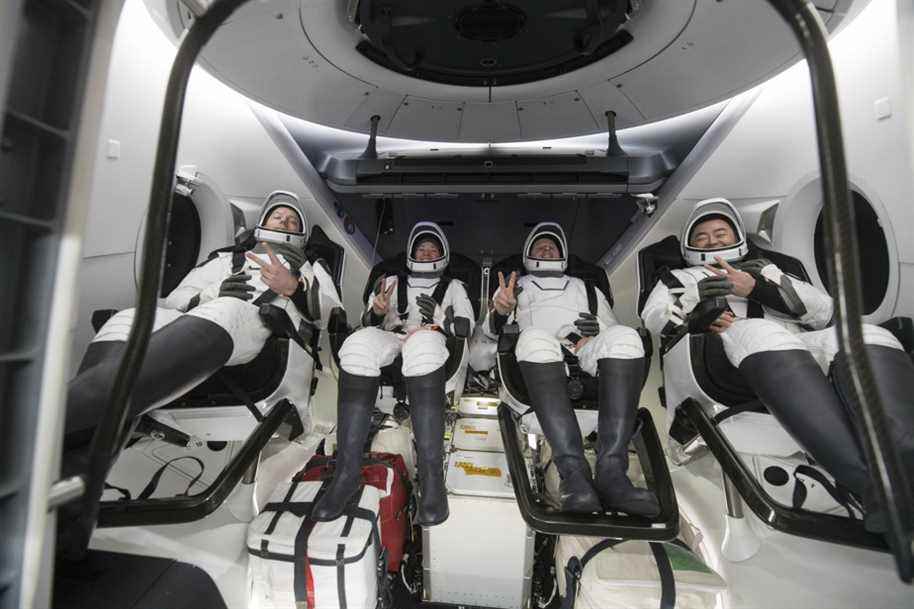Quiz
Q. What a glitch the astronauts returning to Earth in the capsule Crew Dragon have they had last week?

PHOTO PROVIDED BY NASA
The capsule Dragon docked at the International Space Station when a Dragon Cargo (foreground) visited last September.
R. They had to go without the toilet during their day in orbit, before entering the Earth’s atmosphere. A toilet leak during a previous civilian flight of the capsule (in September) had been corrected, but work had not been done on the capsule which had been docked for six months at the International Space Station. Astronauts therefore had to relieve themselves in a diaper designed for long spacewalks and takeoffs. The capsule Dragon broke away from the station on Monday shortly after midnight and made landfall Tuesday evening.
The number
3 million

PHOTO PROVIDED BY THE MAGAZINE NATURE
The ramp that allowed the Assyrians to conquer Lachish
This is the number of stones used in 701 BC by the Assyrians to conquer Lachish, a city in the land of Canaan, southwest of Jerusalem, according to Israeli archaeologists. This is the only physical trace of Assyrian military tactics, even though their empire ruled the region, from Iran to Egypt, for two centuries. Researchers from the University of Jerusalem described their excavations in early November in theOxford Journal of Archeology.
Seaweed for cows

PHOTO ANDRÉ PICHETTE, ARCHIVES THE PRESS
Studies have shown that adding algae to cows’ feed reduces the amount of methane produced by their digestion by 80%.
Can algae reduce methane emissions from cows? This is the question that will be tackled in two trials on Irish and UK farms in the coming years. On the occasion of the COP26, these projects involving Morrisons supermarkets in Great Britain were announced to show that the target of 30% reduction in GHG emissions by the beef industry by 2030, adopted by the Union European and United States, is possible. Previous studies have shown that adding algae to cows’ feed reduces the amount of methane produced by their digestion by 80%. Compounds found in algae, phlorotannins, inhibit the metabolism of gastrointestinal bacteria that produce methane.
Japanese older than expected

PHOTO ARCHIVES THE PRESS
The ancestor of the Japanese language would have been born 3000 years ago.
The “Transeurasian” languages, including Japanese, Korean and Turkish, originated in northeast China 9,000 years ago, rather than 3,000 to 4,000 years ago, according to a new German study . And it is millet farmers, rather than nomadic herders, who are said to have swarmed east and west to give birth to these modern languages. Researchers at the Max-Planck Institute for Human History in Jena, Germany, who have worked with colleagues from half a dozen countries, explain in Nature how they came to this conclusion by combining genetic, archaeological and linguistic information. The ancestor of Korean would have been born 6500 years ago and that of Japanese, 3000 years ago.
A first Inuit dinosaur

ILLUSTRATION PROVIDED BY THE MARTIN-LUTHER UNIVERSITY OF HALLE-WITTEMBER
The dinosaur Issi saaneq lived in Greenland.
An early dinosaur that lived only in Greenland has been identified by Danish and German paleontologists. It is Issi saaneq, an Inuit name meaning “cold bone”. This 10m tall bipedal herbivore lived 214 million years ago. Discovered in 1994, the two skulls were initially considered to belong to plateosaurs, a genus that notably lived in Europe, explained researchers from the University of Copenhagen in early November in the journal. Diversity.

